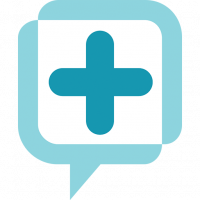Many health systems focus on lung cancer screening promotions during November’s Great American Smokeout. This year the Smokeout is being observed on November 19, 2020, the third Thursday in November.
It is hard to motivate your patients with a smoking history to be screened for lung cancer. Most smokers already know they should quit. They know they are at risk for lung cancer and might need a screening. Therefore, you don’t want to offend them by being preachy. What you should be really trying to do is to help them approach and understand the issue in a comfortable way.
Medicom Health’s Lung Cancer Risk Assessment can provide that education and motivation.
- It educates people with a smoking history, who may not even know what a lung screening is, why one is needed and who is eligible.
- Additionally, some people respond better to a computer delivering this kind of message. Some might even take the assessment multiple times before scheduling an appointment.
Identifying Eligibility for Lung Cancer Screenings
Current lung cancer screening guidelines include a difficult to understand and calculate parameter called number of smoking pack-years. However, the Medicom Lung Cancer assessment provides a smoking pack-year calculator that identifies which smokers are eligible for low-dose computer tomography (LDCT) screening. The HRA does not directly calculate lung cancer risk. It helps users understand if they should schedule a lung screening based upon widely accepted guidelines, which are a 30 pack-year smoking history and age 55 years or older. Delivering targeted calls to action to these individuals to make appointment can direct them to have a discussion with a doctor about screening options.
A Personal Evaluation of Lung Cancer Risk
The Lung Cancer Risk Assessment evaluates not only smoking, but also a variety of other lung cancer risk factors. Besides family history, other factors include history of pulmonary fibrosis; radiation therapy to the chest; and exposures to second-hand smoke, asbestos, radon, dusts, inhaled chemicals, or air pollution. The assessment takes a very objective approach to quantifying these personal data points. As a result, it helps users understand their exact personal situations.
While internal motivation is best, having your nurse navigators reach out to high-risk users via personal phone calls can be very effective.















 Thank you for your interest.
Thank you for your interest.